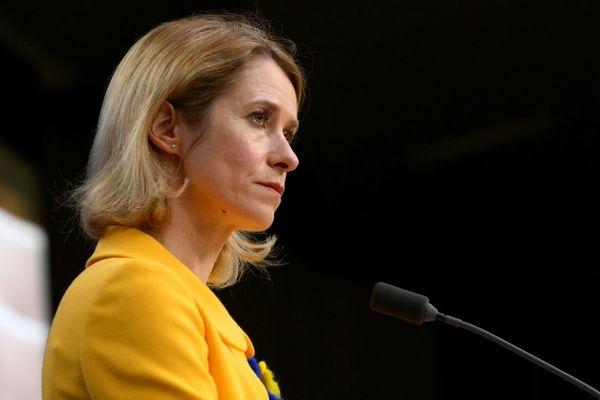
Doha, Qatar – In 2002, football enthusiasts visiting Japan and South Korea for the World Cup became acquainted with the hand fans.
Eight years later, vuvuzelas were introduced to the world by South Africa.
This year, Qatari national Khalifa Naimi is among those introducing football fans from around the world to a new spin on the ghutra, a traditional headscarf worn by men in the region, often held in place by a ugal, two cord loops that go around the head with tassels hanging down the back.
For the 2022 World Cup, Doha is abloom with ghutras done up in the colours of the 32 participating countries.
On most days, 26-year-old Naimi can be found at his Ghutra Mundo store tucked away in a corner of the Souq Waqif Metro Station in the capital Doha.

Business is booming as hundreds of thousands of fans from across the world come to the Gulf country for the first tournament to be hosted in the Middle East.
Eager to show their team loyalties, people have been streaming into souvenir shops and snapping up the branded ghutras, which have been everywhere in stadiums during matches.
But for Naimi, it’s not just about sales, he wants to tell visiting football fans about a culture he is proud of, he says.
“The ghutra is a great unifying symbol that is part of our national dress”, Naimi tells Al Jazeera. “To partake and share in our culture makes the ghutra a great symbol of hospitality”.
In addition to ghutras with the flags of the 32 World Cup teams, Naimi also offers bespoke thobes (traditional ankle-length robes worn by men in the region) and prayer beads.
‘Part of our persona’
Some may see selling traditional products with a twist to make them more attractive to tourists as trivialising the culture, Naimi said.
But he says the feedback has mostly been positive, from locals and fans alike, even if there is a continuing debate between the more and less conservative segments of the community.
As customers congregate in front of the shop ahead of a football match, Naimi makes sure to personalise their experience, explaining the modest outfits of both men and women in the region.
He shows off different ways of wearing the ghutra, especially his go-to style – the “cobra”.
This interaction put fans at ease about wearing the ghutra is important he says, so they don’t worry about overstepping the line between cultural appreciation and cultural appropriation.
“This is not just a Qatari thing, it’s in Saudi Arabia, the UAE, Bahrain, Kuwait and around the Middle East. it’s part of our persona. I want people to come for the Word Cup and leave with our culture,” Naimi said.
For many customers, including Jouad from Morocco, this is their first dip into wearing a ghutra. “I never tried … this is the first time I have tried it and I have lived in Qatar for 10 years,” he says.
“When you see the Moroccan team and people here you feel proud, especially on Arabic land here for the first time. I feel like I am home, in the capital of Morocco”

Ashraf, a resident of Singapore and the proud owner of a ghutra in the Brazilian colours, says it’s not really the full World Cup experience unless you get the scarf. “[It’s] just like if you go to Brazil, you wear all the nice Rio Carnival stuff … it amplifies the culture,” he said.
Tunisian fan Belgacem agreed, trying on a ghutra as his wife took photos.
“I am buying it [the ghutra] as a souvenir,” he said. “When I go back to my country, I will remember this marvellous event and I will celebrate my presence here.”
With the tournament in full swing, Naimi is proud of his task and beaming with pride, even if he is missing live games during the tournament.
“It means the world to host this tournament in Qatar,” he told Al Jazeera. “This is the time we show the world how we shine. Qatar may be small in size, but it is big in acts, and hopefully, this tournament shows that.”




![Nevada Math Prof Alleges Discipline for "Voic[ing] Concerns About … the Math Department … Lower[ing] Its Curriculum Standards"](https://images.inkl.com/s3/publisher/cover/212/reason-cover.png?w=600)


